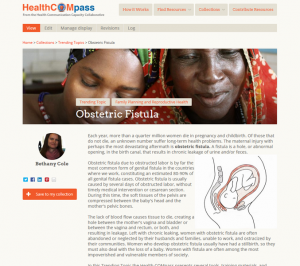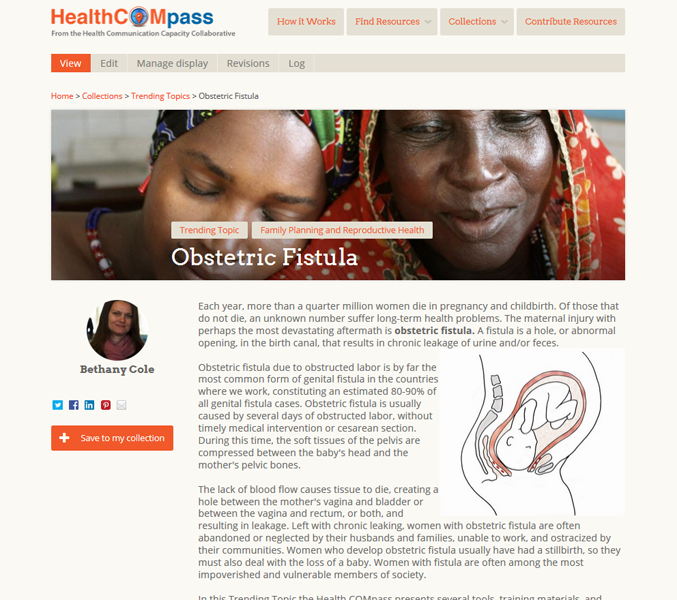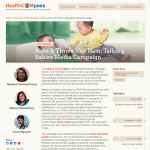Tackling a Childbirth Injury with a Devastating Aftermath: Obstetric Fistula
 In its newest Trending Topic the Health COMpass presents a selection of tools, training materials and client materials to help both service providers and patients understand and manage the after-effects of a devastating childbirth injury – obstetric fistula.
In its newest Trending Topic the Health COMpass presents a selection of tools, training materials and client materials to help both service providers and patients understand and manage the after-effects of a devastating childbirth injury – obstetric fistula.
Each year, more than a quarter million women die in pregnancy and childbirth. Of those that do not die, an unknown number suffer long-term health problems. A fistula is a hole, or abnormal opening, in the birth canal, that results in chronic leakage of urine and/or feces.
Obstetric fistula due to obstructed labor is by far the most common form of genital fistula in the countries where we work, constituting an estimated 80-90% of all genital fistula cases. Obstetric fistula is usually caused by several days of obstructed labor, without timely medical intervention or cesarean section. During this time, the soft tissues of the pelvis are compressed between the baby’s head and the mother’s pelvic bones.
The lack of blood flow causes tissue to die, creating a hole between the mother’s vagina and bladder or between the vagina and rectum, or both, and resulting in leakage. Left with chronic leaking, women with obstetric fistula are often abandoned or neglected by their husbands and families, unable to work, and ostracized by their communities. Women who develop obstetric fistula usually have had a stillbirth, so they must also deal with the loss of a baby. These women also are often among the most impoverished and vulnerable members of society.
For both patients and service providers, social and behavior change communication (SBCC) efforts are critical in addressing issues related to obstetric fistula. For patients, SBCC can alert women about signs and symptoms of this condition, encourage them to give birth in a medical facility if at all possible and offer hope of a healthy life should they suffer from obstetric fistula. For service providers, training in both how to prevent this injury as well as how to manage those who suffer from it can allow them to offer hope and help to their clients.








Leave a Reply
Want to join the discussion?Feel free to contribute!